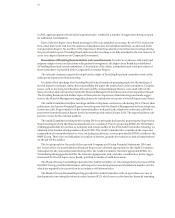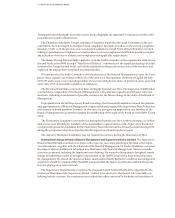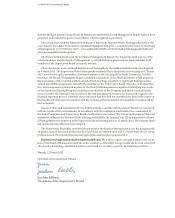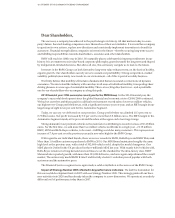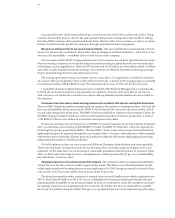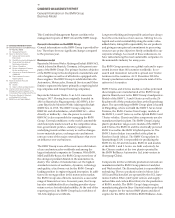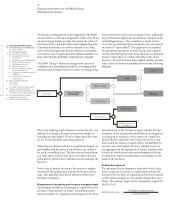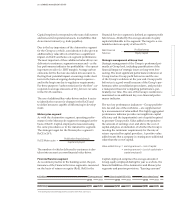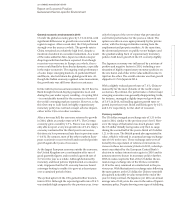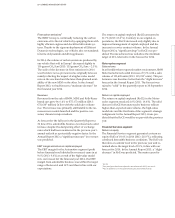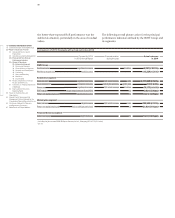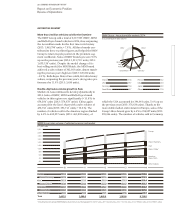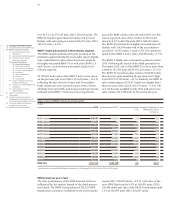BMW 2014 Annual Report Download - page 20
Download and view the complete annual report
Please find page 20 of the 2014 BMW annual report below. You can navigate through the pages in the report by either clicking on the pages listed below, or by using the keyword search tool below to find specific information within the annual report.
20
18 COMBINED MANAGEMENT REPORT
18
General Information on the
BMW
Group
18 Business Model
20 Management System
23 Report on Economic Position
23 General and Sector-specific
Environment
26 Overall Assessment by Management
26
Financial and Non-financial
Performance Indicators
29 Review of Operations
49 Results of Operations, Financial
Position and Net Assets
61 Comments on Financial Statements
of BMW AG
64 Events after the End of the
Reporting Period
65 Report on Outlook, Risks and
Opportunities
65 Outlook
70 Report on Risks and Opportunities
82 Internal Control System and Risk
Management System Relevant for
the
Consolidated Financial Reporting Process
83 Disclosures Relevant for Takeovers
and Explanatory Comments
87
BMW Stock and Capital Markets
The business management system applied by the BMW
Group follows a value-based approach, with a clear focus
on achieving profitable growth, increasing the value of
the business for capital providers and safeguarding jobs.
Corporate autonomy can only be ensured in the long
term if the profit generated by the business sustainably
exceeds the cost of equity and debt capital available to it,
thus reflecting the profitable employment of capital.
The BMW Group’s internal management system is
multilayered. Operating performance is managed first
and foremost at segment level. In order to manage long-
Due to the high aggregate impact of various factors, it is
difficult to manage a business proactively simply by
focusing on value added. This key figure therefore only
serves for intermediate reporting purposes.
Value drivers which could have a significant impact on
profitability and the value of the business are defined
for each controlling level. The financial and non-finan-
cial
value drivers referred to above are reflected in the
principal key performance indicators used to manage the
business.
In the case of project decisions, the system is supple-
mented by the application of project-relevant control
logic, also utilising value-based and return-based per-
formance indicators.
Management of operating performance at segment level
Operating performance is managed at segment level on
the basis of capital rates of return. Depending on the
business model, the segments are managed on the basis
term performance and assess strategic issues, additional
key performance figures are measured at Group level for
controlling purposes. The contribution made to busi-
ness value growth during the financial year is measured
in terms of “value added”. This approach is translated
for operational purposes at both Group and segment
level by identifying the main financial and non-financial
factors (“value drivers”) which affect the value of the
business. The link between value added and the relevant
value drivers is shown in simplified form in the following
diagram.
of total return or the return on equity capital. The per-
formance of the Automotive and Motorcycles segments
is measured on the basis of the return on capital em-
ployed (RoCE) and that of the Financial Services seg-
ment
using the return on equity (RoE). Profitability (re-
turn on sales) and capital efficiency (capital turnover)
are aggregated in the capital rate of return, together with
a whole host of business-relevant information that has
an impact on segment performance and changes in the
value of the business.
Automotive segment
The principal key performance indicator for the Auto-
motive
segment is return on capital employed (RoCE),
measured on the basis of segment profit before financial
result and the average level of capital employed in oper-
ations. The strategic target for the Automotive segment’s
RoCE is 26 %.
Profit before financial result
RoCE Automotive = Capital employed
General Information on the BMW Group
Management System
Revenues
Profit
×−
–
×
÷
÷
Expenses
Return on sales
Capital turnover
Capital employed
Cost of capital
Average weighted cost
of capital rate
Return on capital
(RoCE / RoE)
Value added


